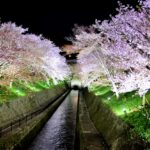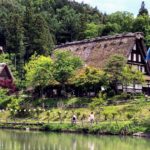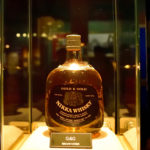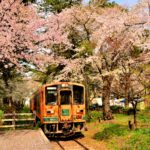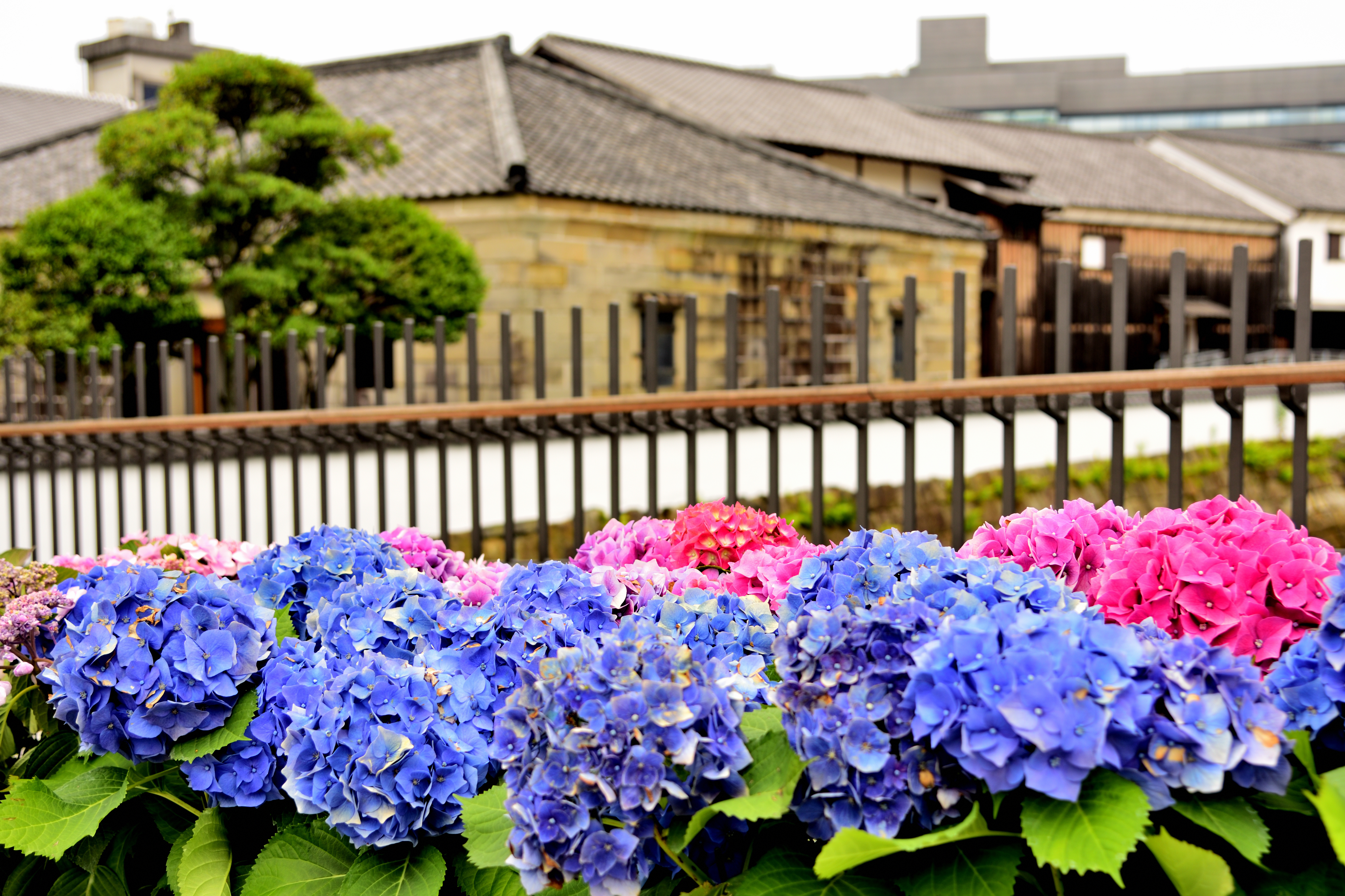
Hydrangea introduced by Siebold to the world
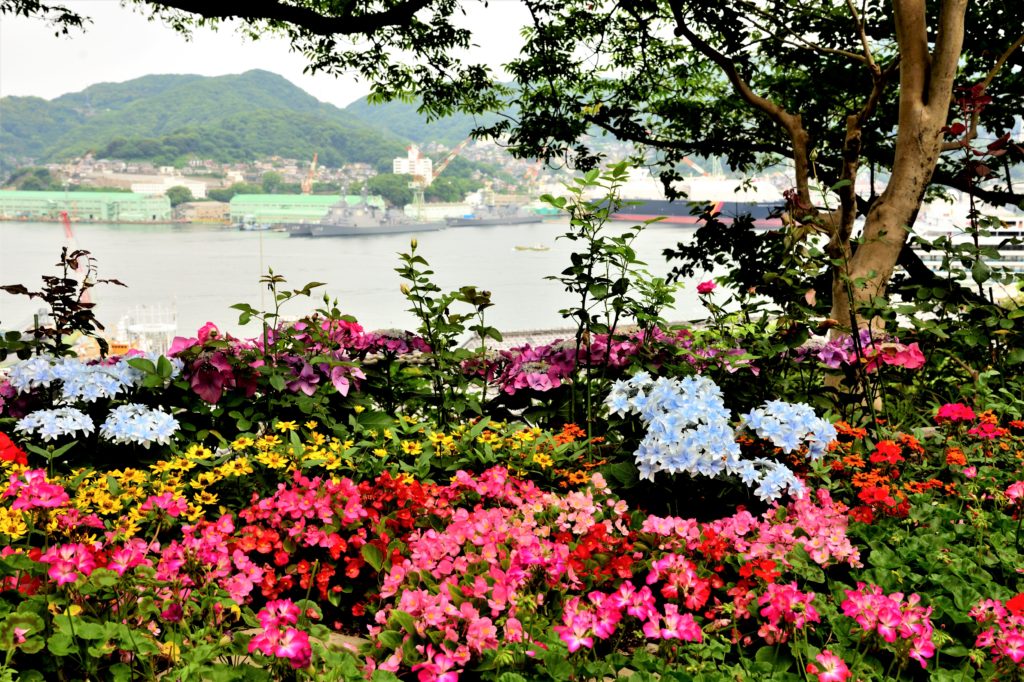
It is German Siebold who came to Japan as a doctor in the isolated country era to introduce the beautiful hydrangea that Nagasaki citizens love to the world. As a researcher in natural sciences, Siebold collects, surveys, and categorizes many plants during his stay in Japan. In the activity, he named one hydrangea "Otaukusa" which is the name of the Japanese woman he loved.
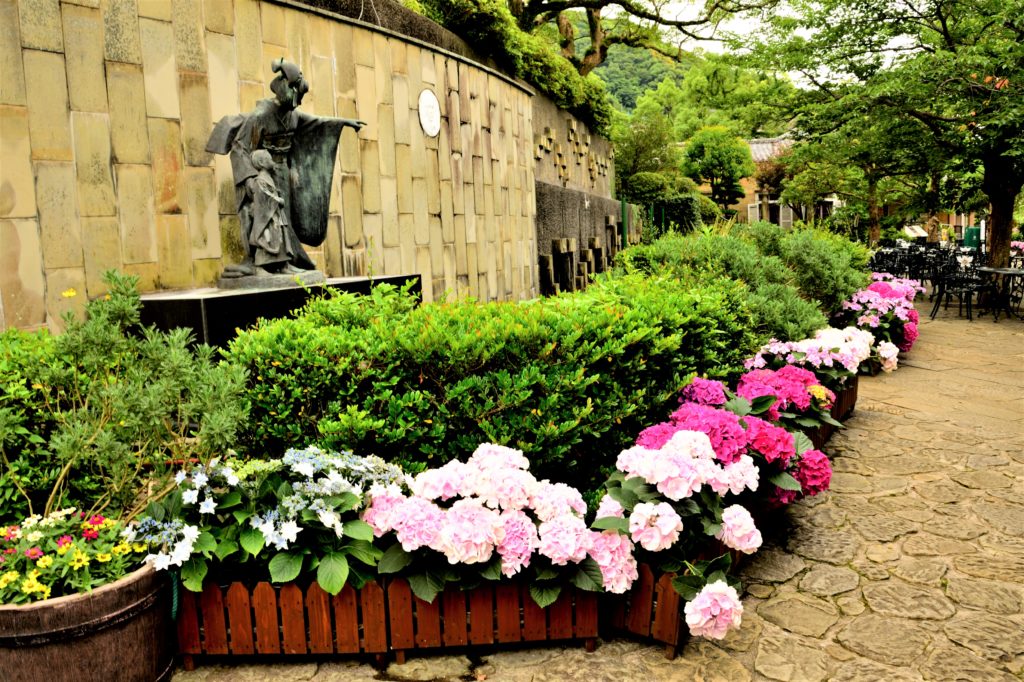
In Nagasaki, the city's flower was designated as hydrangea, and all varieties of hydrangea are now called "Otakusa" or "Otakisan flower", regardless of varieties. The “Nagasaki Hydrangea Festival (Otakusa) Festival” is held from May to June in general (May 26 to June 17, 2018). This year again, 4,000 shares of Hydrangea were competing for beauty at Meganebashi (Spectacles Bridge), Dejima, and Glover Gardens.
In addition to the dignified appearance that is full of energy while being hit by the rain, the love story of Siebold and "Otaki-san" makes the hydrangea more romantic, and it still attracts many people.
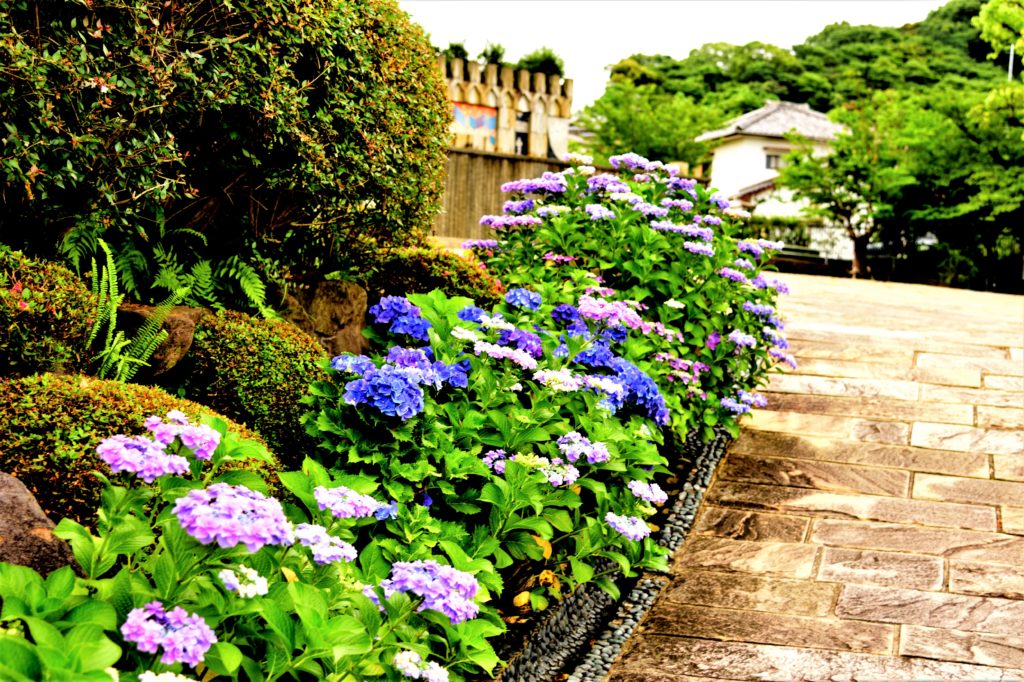
"Dutch slope" "Glover garden", walk of the cityscape of Nagasaki where slope suits
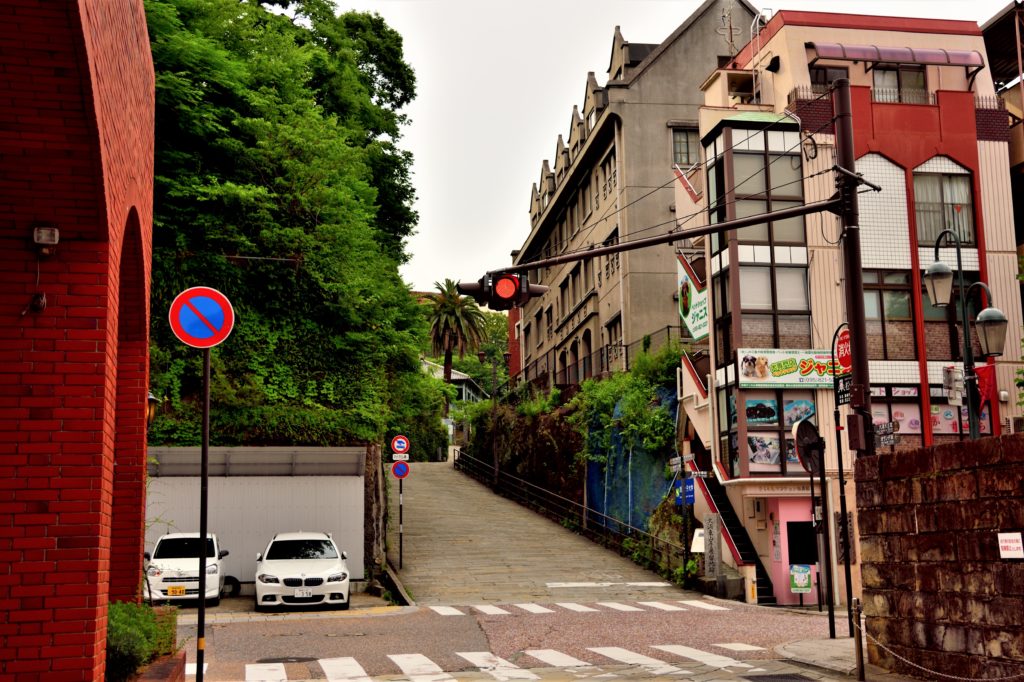
It is Nagasaki that it was the only window with foreign countries under the isolation of the Edo period. Nagasaki is a hill town. The slopes in the foreign settlements are called "Dutch Slopes", and there are Higashiyamate Western-style housing groups in the vicinity, and you can enjoy exotic scenery.
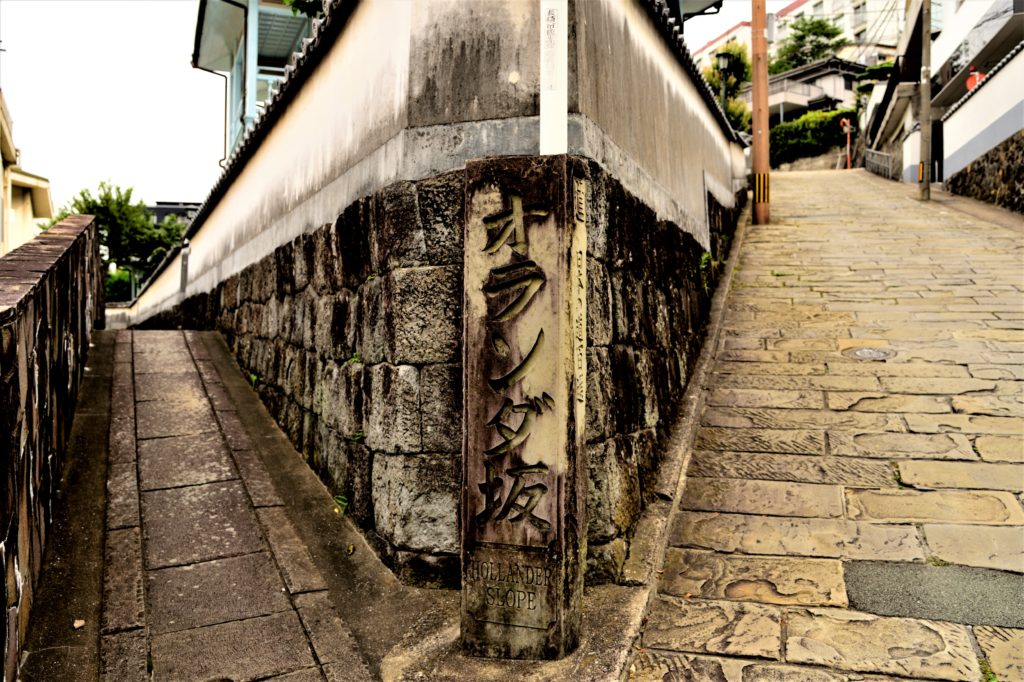
If you go down the Dutch slope and visit the Minamiyamate area and climb up with the elevator, you can overlook the residential area built to stick to the slopes of the mountain and the Nagasaki Port called "The Crane Port" where cranes spread beautifully.
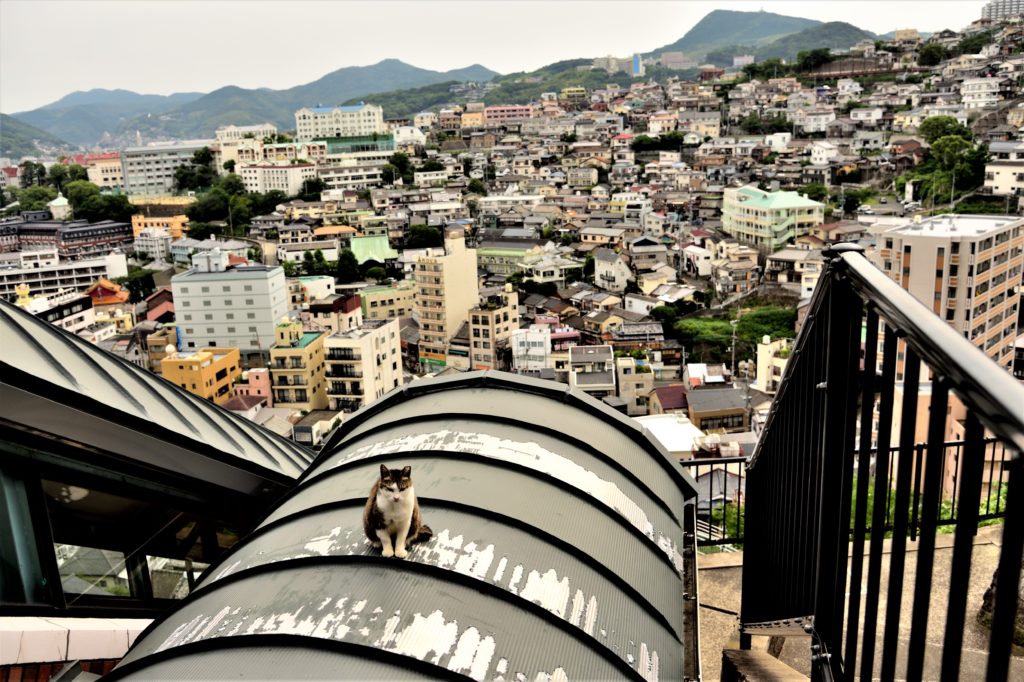
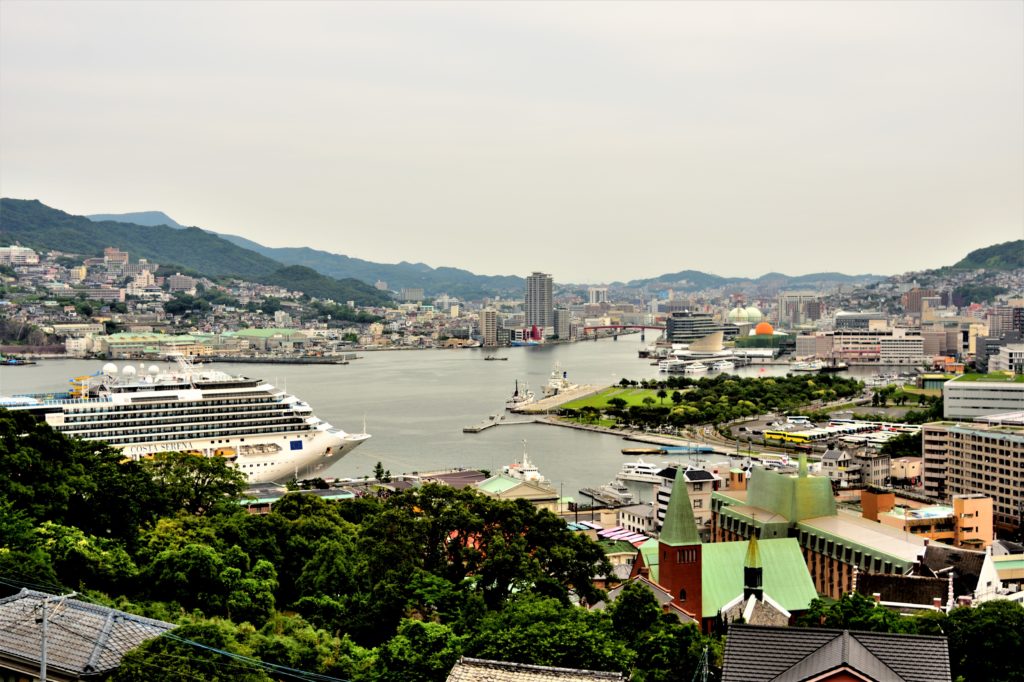
Modern Japan opening, Meiji period. In Nagasaki, there were foreign merchants who crossed the sea with a big dream in mind. Among them, the person who particularly contributed to the modernization of Japan is Thomas Glover. At the end of the Edo period, he contributed greatly to the modernization of Japan, including the trade of weapons and the overseas dispatch of prisoners. The house where he lived, which is also Japan's oldest wooden building, was relocated in the "Glover Garden".
During the Hydrangea Festival, it is colored with many hydrangeas and shows a slightly different landscape.
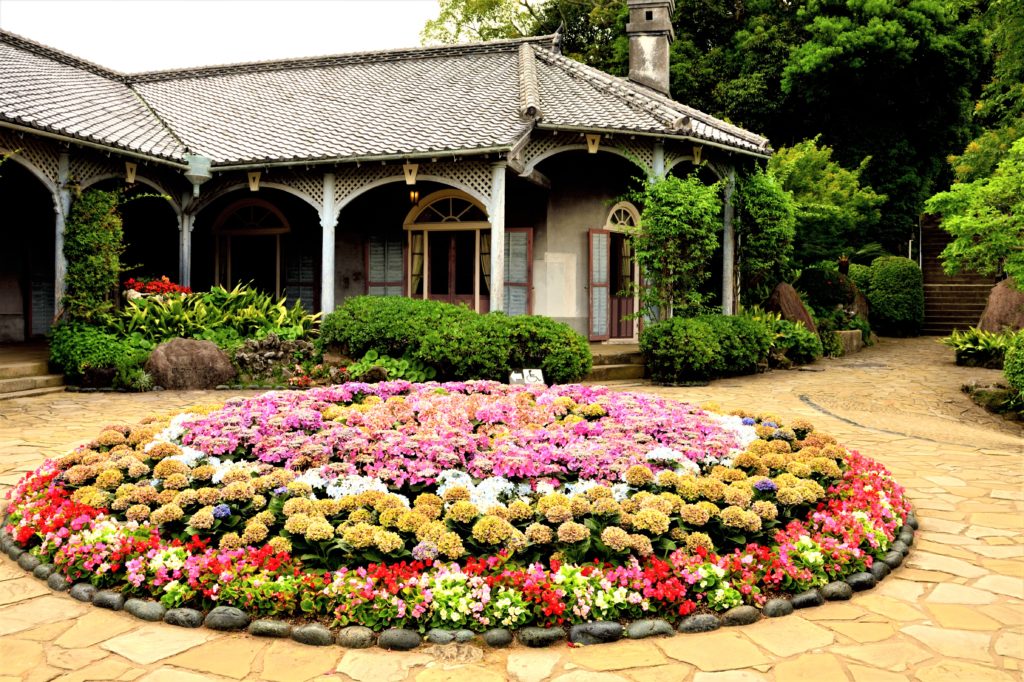
In the Glover Garden, which is located on a hill, hydrangea blooms here and there. Behind the 150-year-old wooden Western-style Glover House and Hydrangea, we were able to see the beautiful harbor tasteful scenery. The appearance of the ship entering and leaving is blended into the cityscape.
At the moment a luxury cruise ship enters or leaves, you can experience the force as if a building were moving at your feet.
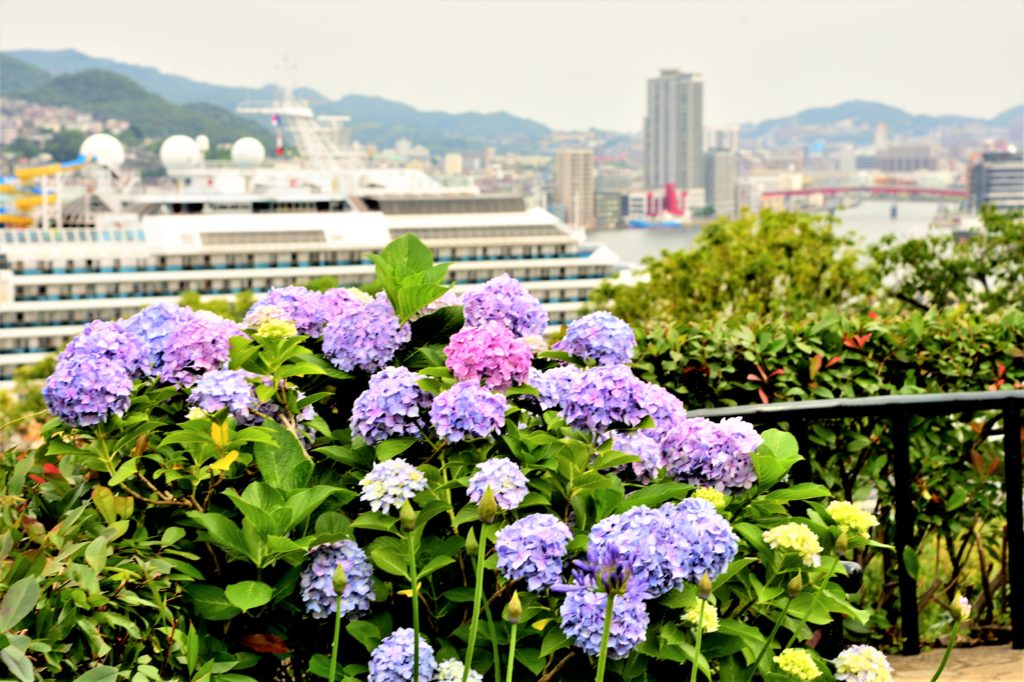

Colorful Hydrangea coloring "Dejima" and "Meganebashi (Spectacles Bridge)"
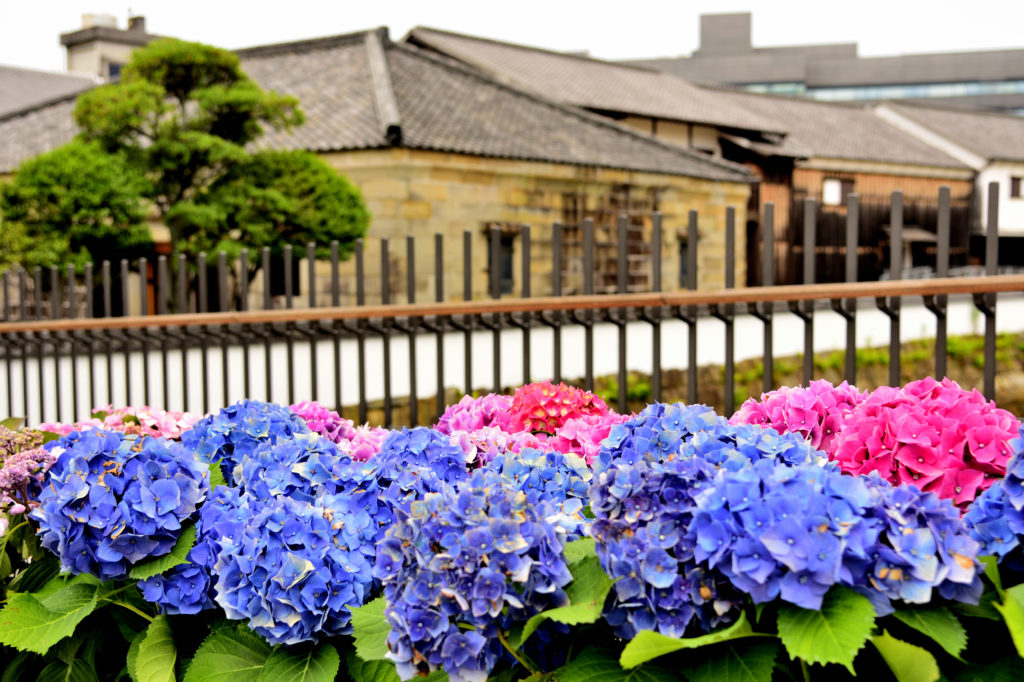
The location of Dejima, which was only allowed to trade with the West during the isolation period, had its cityscape restored. The hydrangea that Siebold loved adds color to the view of the city.
The "Dejima Front Gate Bridge", which was opened for the first time in 130 years, is 38.5 meters long and 4.4 meters wide. Simple design of iron is stylish.
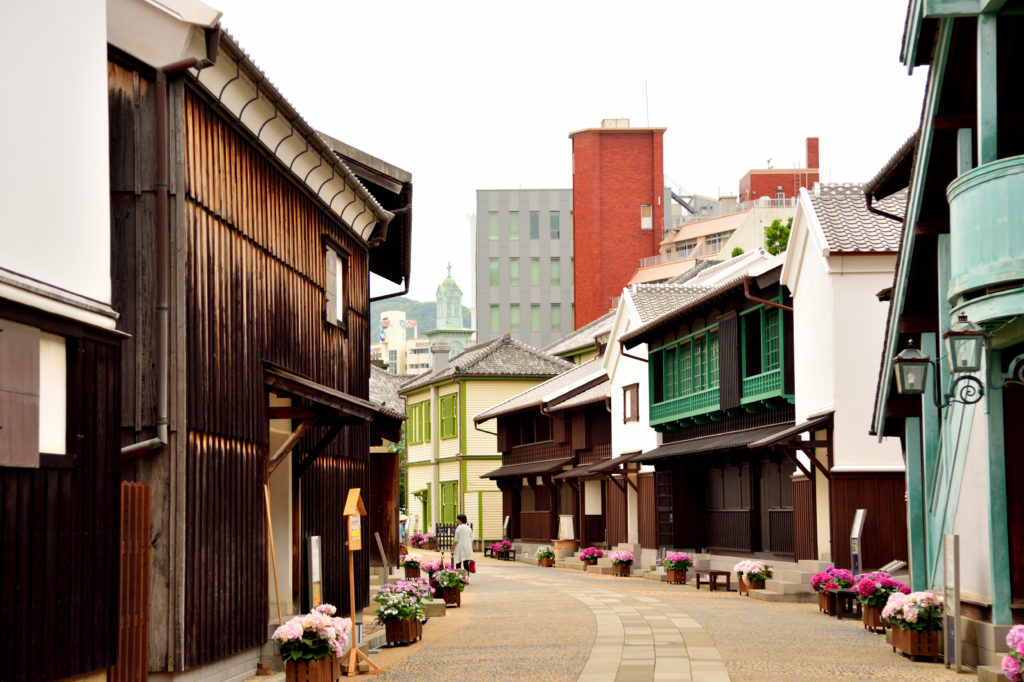
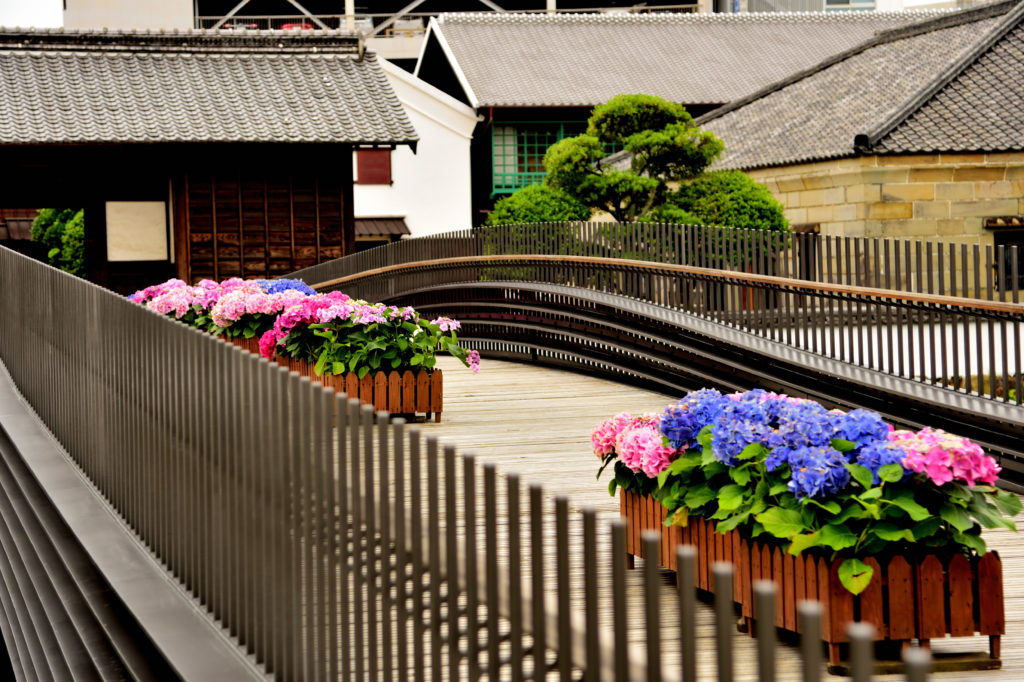
From Dejima, we headed towards Shinchi, passing the Bernado Sightseeing Street and heading for Meganebashi (Spectacles Bridge).
Meganebashi is Japan's oldest arched stone bridge that spans the Nakajima River. The collaboration between Meganebashi and the gorgeous Hydrangea is emotional and tasteful.
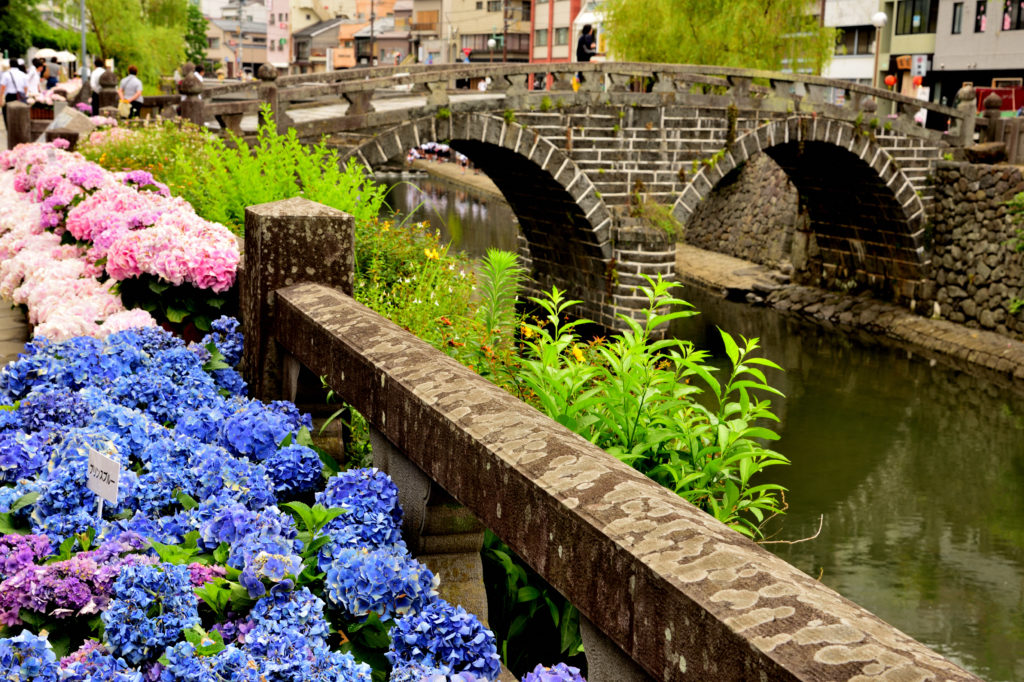
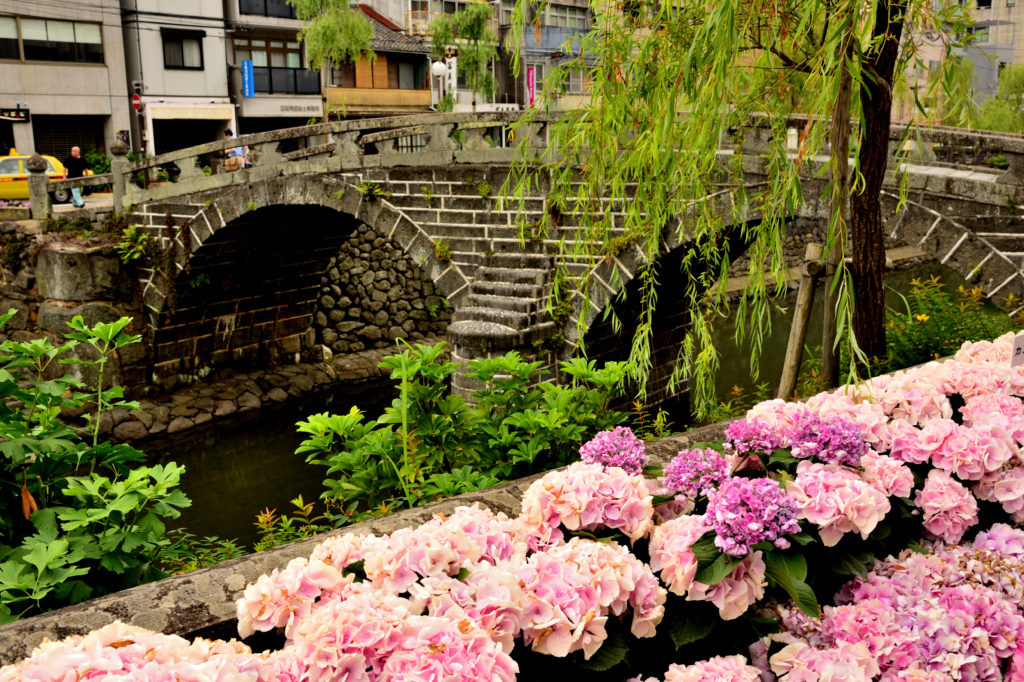
Rainy city Nagasaki. With a deep grief history of atomic bombings, it is a city full of wishes and prayers for peace. “Peace Park” extends to the northern part of Nagasaki city area, around the atomic bomb's hypocenter. The park is roughly divided into a zone of wish, a zone of prayer, a zone of learning, and was visited by people who knew that time, students learning history, and foreign tourists.
I could see the "Peace Statue" from the gap of the "Water of peace" fountain. It is a bronze statue completed in 1955 by the hand of sculptor Seibo Kitamura from Nagasaki Prefecture.
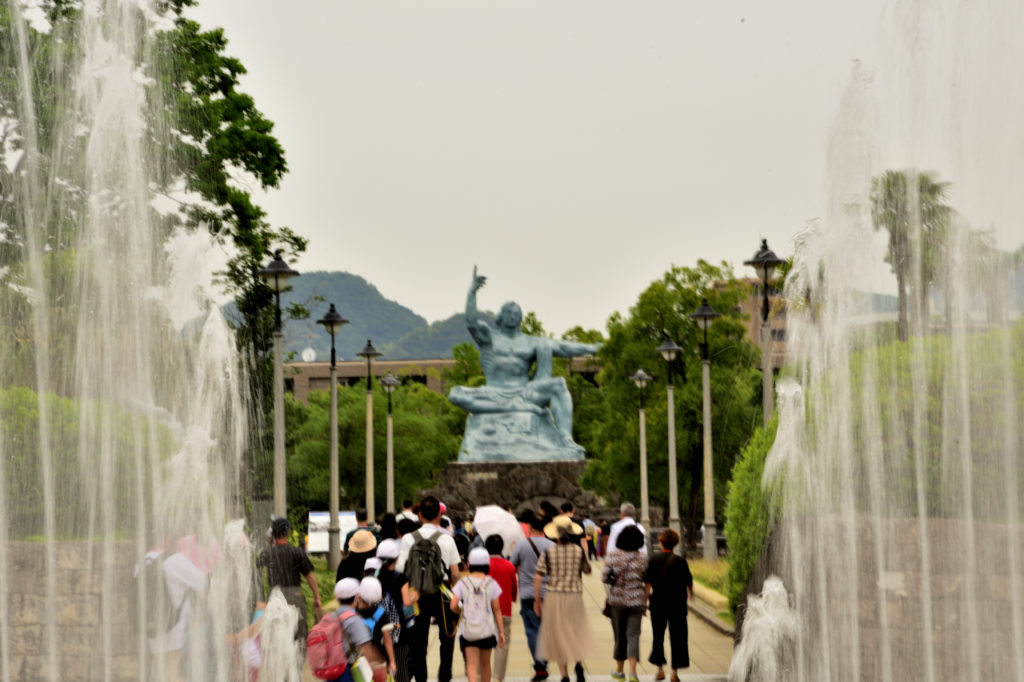
The right hand pointing to the sky shows “The threat of the atomic bomb (the past of Nagasaki)”, and the horizontally extended left hand contains “A prayer for peace (the future of Nagasaki)”. A huge and powerful bronze statue about 9.7 meters high made of bronze weighing about 30 tons is a symbol of Nagasaki City. The statue is loved by tourists and of course many citizens.
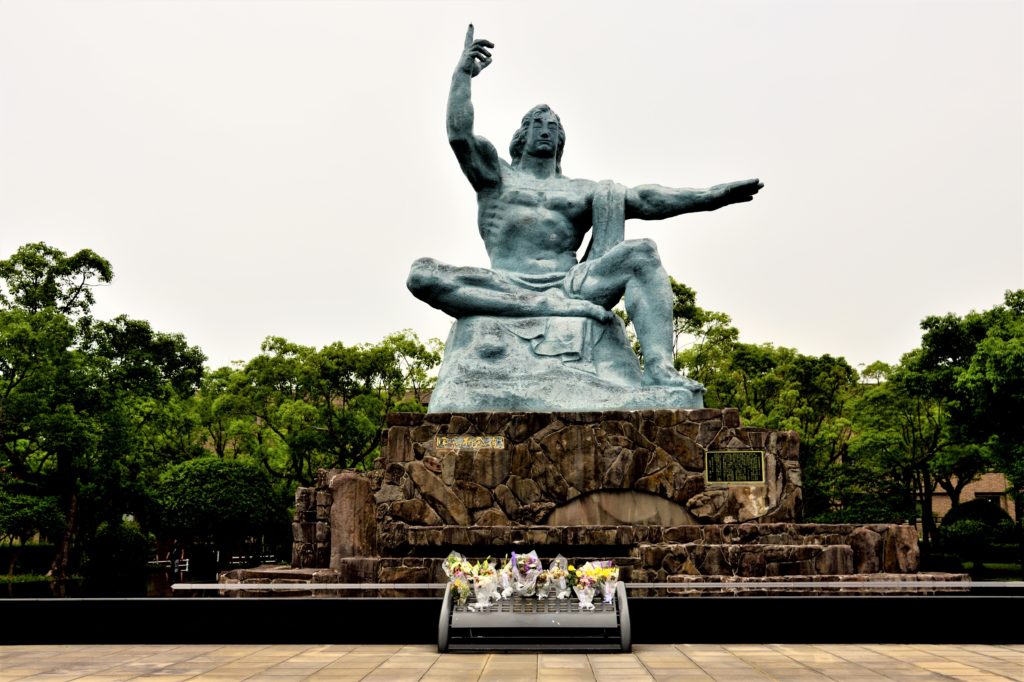
A golden crane shining at the top of the "Oizuru Tower" and Peace statue were filled with prayers for the peace of Nagasaki citizens to never repeat the history of tragedy again.
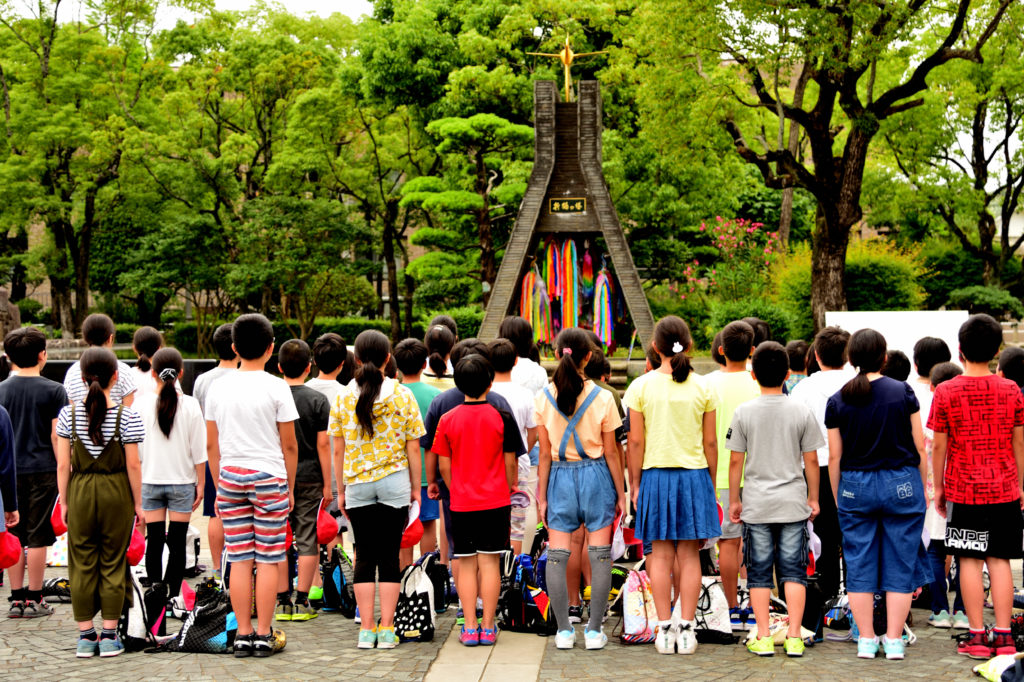
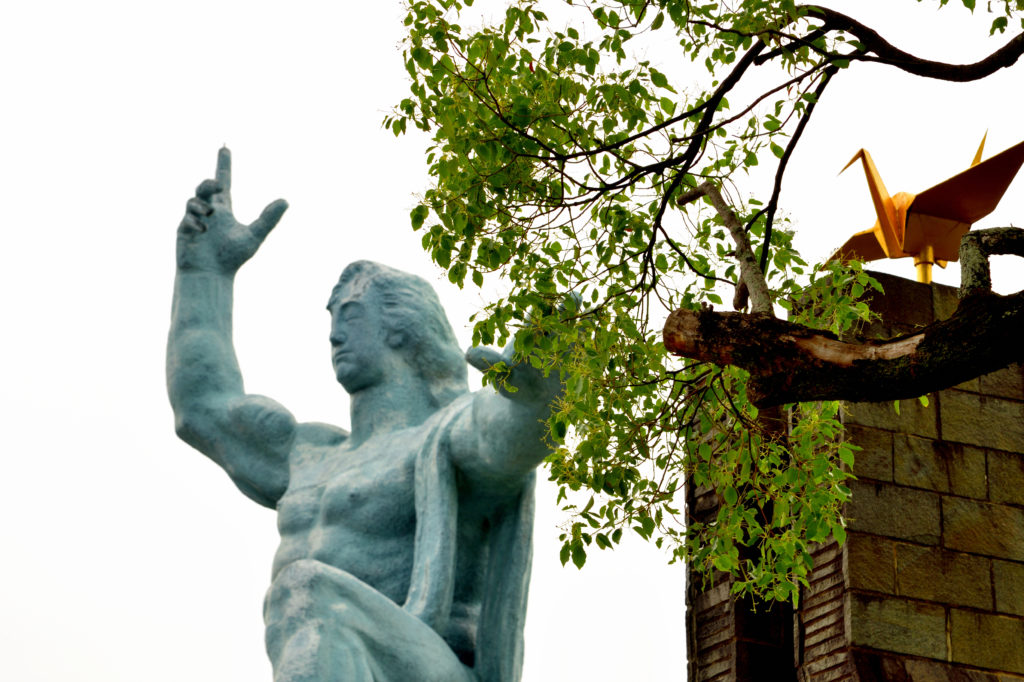
Designated as "New Three Major Night View of World" and "New Three Major Night Views of Japan"! Night view of Nagasaki that wraps up everything
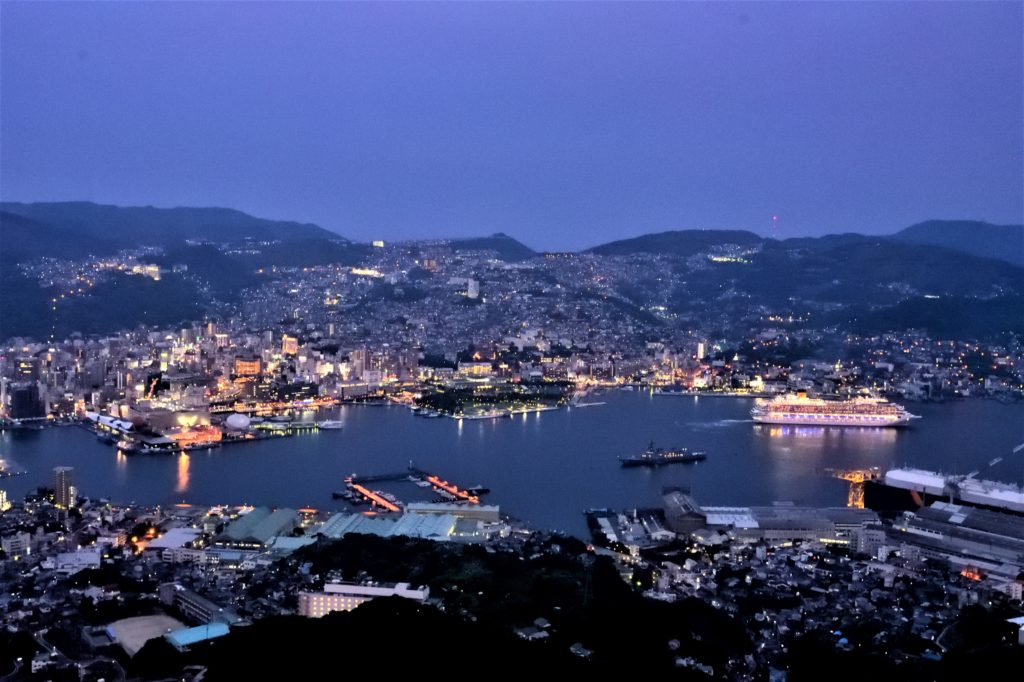
When the sky in Nagasaki dyed the sunset, I climbed Mt. Inasayma on a ropeway. When the fiery sunset comes to an end, the city of Nagasaki gets a new light little by little.

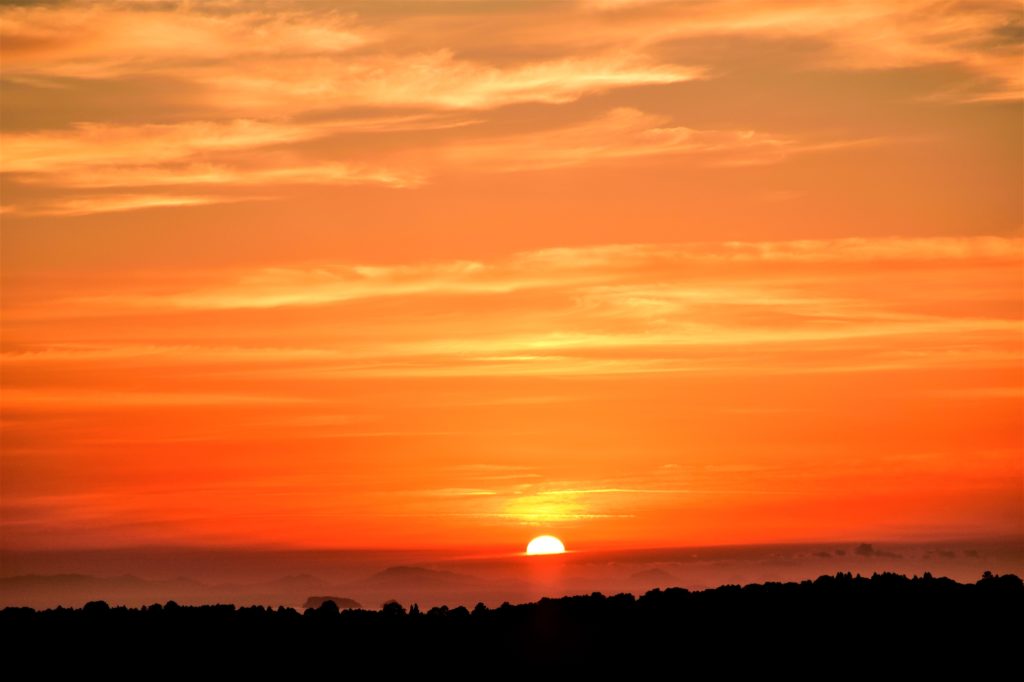
There are many great night views in Japan, but the night view of Nagasaki is said to be an unforgettable scenery. As there is nothing to block the view from Inasayama Observatory, you can overlook the 360 ° panoramic Nagasaki landscape.
The night scene is designated as "New Three Major Night View of World" with Hong Kong and Monaco, and further certified as "New Three Major Night View of Japan" with Kitakyushu and Sapporo.
The city of Nagasaki is surrounded by mountains, so you can see the jewel-like brilliance of the city's night lights on a small box.
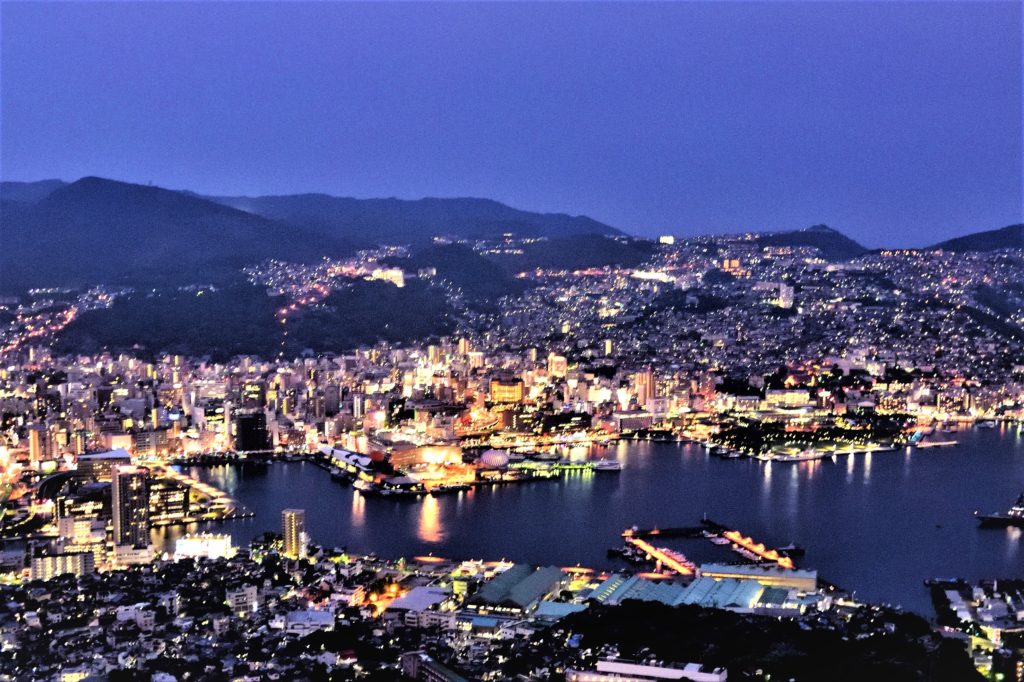
The rugged terrain creates a three-dimensional light, and you can indulge in a comfortable space surrounded by warm light. I felt nostalgia for some reason.
I took a walk through the city of Nagasaki colored with hydrangeas, touched the feeling of sacred air at the Peace Park where prayer for peace was formed, and witnessed a night view that embraces everything. The trip to Nagasaki was an unforgettable memory for me.

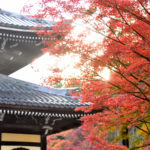


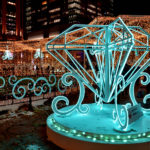

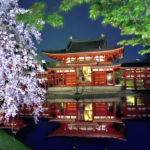
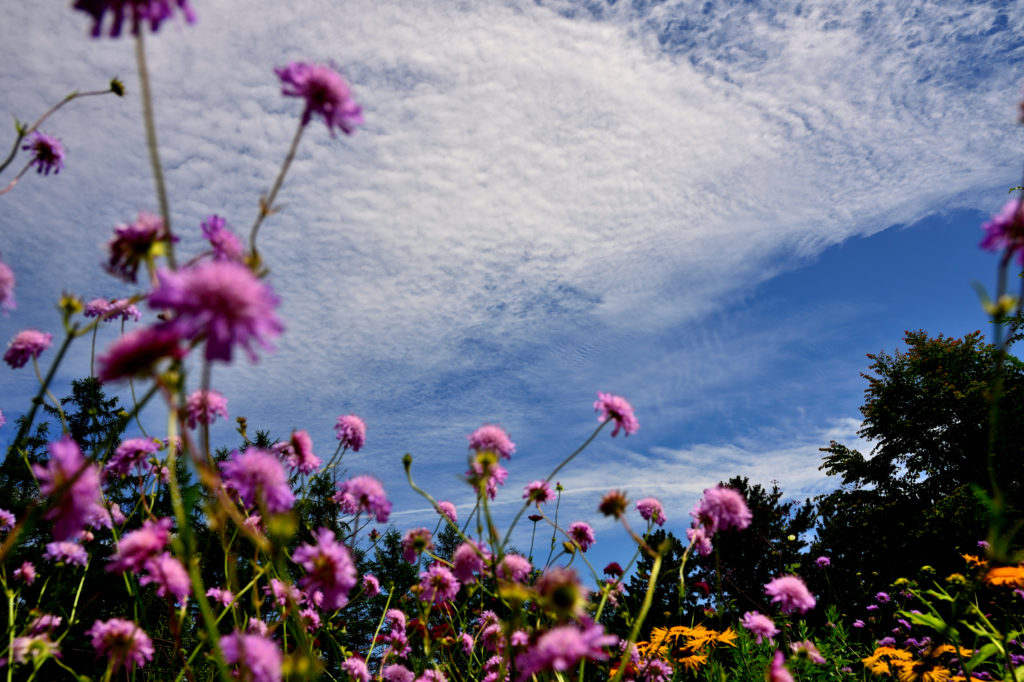 ">
"> 